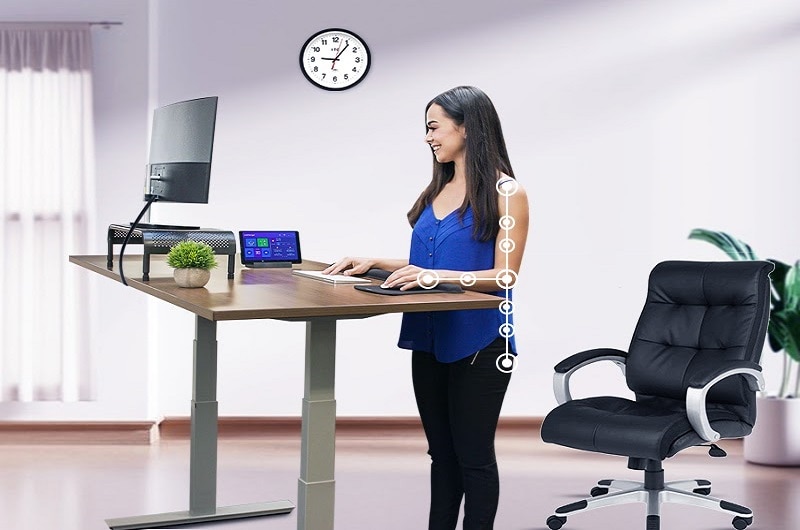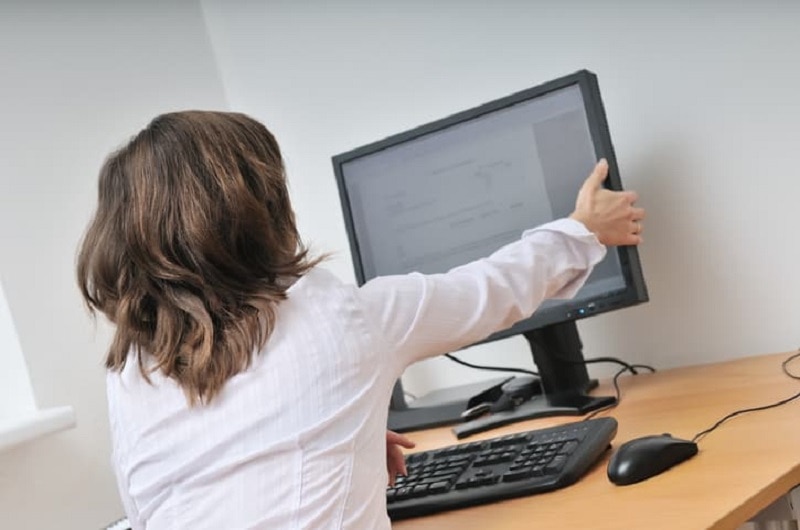If your job requires you to sit for long periods, there's a high chance that you develop neck and back pains.
However, you can prevent such discomfort by beginning a daily work routine - going to the gym or doing yoga at home consistently. Sadly, most people don't have time for daily workouts, and occasional workouts are ineffective.
It's not natural for the human body to remain in one sitting position for hours because there'll be so much pressure on the neck and back.
Therefore, if you do a desk job, you'll need to find alternative ways to prevent back and neck problems.
Luckily, there are other solutions to the problems aside from engaging in daily workouts - using standing desks. This article will feature eight tips to use standing desks correctly.
Tips on How Use Standing Desks Correctly
It's not only about getting a quality height adjustable standing desk; you must know how to use it correctly. By using the desk properly, you'll feel better and have an enjoyable working experience.
Let's look at eight tips on how to use your standing desks correctly like a pro:
1. Move while using a standing desk
You shouldn't just stand behind your standing desk like a monument; move! The human body doesn't naturally function properly in static positions, albeit sleeping is excluded.
You could take a walk around your house, office, or any environment you're in. If walking doesn't sound like something you'd want to do, consider trying some leg and back stretches at your standing desk.
The goal is to put your body in motion to allow the easy flow of blood. It's not advisable to sit or stand for long. Try engaging your body for some minutes, get back to work, and feel re-energized.
2. Maintain a correct standing posture

As you may know, there are right and wrong postures of sitting while working. In the same vein, there's a posture you must maintain while standing to use a standing desk.
It's wrong to lean on the desk or bend your back/neck while standing. The correct posture is standing straight with your feet planted on the ground with your toes forward.
If you maintain this posture, you'll get used to it and find the incorrect posture discomforting.
3. Place something soft under your feet
Apart from your neck and back hurting from sitting for a long time, your feet could hurt after standing for long periods.
Place a soft material (like a flow board or anti-fatigue mat) under your feet to avoid this problem.
You can purchase a good quality anti-fatigue mat with a comfortable ergonomic design to help you relieve the pressure that you put on your feet. Most of these products are available on Flexispot.
The function of the soft material is to ensure the free flow of blood from your legs to your feet without pressure and to make your feet comfortable. Most importantly, make sure the shoes you're wearing are cosy and of good quality.
4. Position your shoulders properly
When using height-adjustable desks, you must learn to position your shoulders properly, so you don't cause problems for yourself.
Unlike the adjustable standing desk, you can slouch without feeling so much pain when using the conventional computer desk.
If you're using a height-adjustable standing desk, roll your shoulder at different intervals or whenever you realize you're slumping your shoulders. Make shoulder rolls a habit, and you will hardly experience pain while using your standing desks.
5. Use arm support
Since standing desks don't have armrests, you'll need to place your hands (or wrist) on the desk; else, your arms will hurt badly.
If you're not comfortable with placing your hands on the desk, install some support (extension) on the desk under your wrist.
However, if you already have our ergonomic chair with an armrest, you're good to go. It'll interest you to know that ergonomic products enhance productivity.
6. Take breaks
Working with a comfortable standing desk doesn't mean you should spend the whole day on the desk. Give yourself a break!
Maintaining a correct standing posture and incorporating short walking sessions at intervals is perfect, but you still need to take breaks. A break period will help you refresh and re-energize.
7. Adjust the height of your monitor

When your monitor is at the wrong height, you'll most likely be forced to bend backwards to see the screen when sitting or bend forward to see it when standing.
These postures will cause your shoulders and neck to hurt. To avoid this problem, you need to adjust your monitor to a recommended height using an adjustable monitor mount.
Most importantly, ensure your screen is at eye level and not too close to your face. You can test if it's at the right position by stretching your hands forward to touch the screen from where you're sitting. Only your fingertips will touch the screen if it's in the correct position.
8. Adjust your mouse and keyboard position
Wrist pain is a significant problem for a person who works using his hands. If you're working with your keyboard for long hours and you don't place it correctly, you'll be risking wrist pains.
Here's a tip - when you're standing, tilt your wrist upwards more than you do when you're sitting.
If you notice that your standing desk is at the correct height but your wrists still hurt, get a pad so you can raise your keyboard to the recommended level.
Final Thoughts
It could take you some time to get used to standing desks.
Nevertheless, if you apply all these tips, you will know how to use standing desks correctly and develop a good posture that'll improve your health with your desk job and a no-workout routine.
Don't beat yourself up just because you slouched again; consistently follow these tips, and you'll develop the proper habits to use your height-adjustable standing desk correctly like a pro.
Flexispot is concerned about making you stop living a sedentary life. You can reach out to us here.